Edited by Andrew Roberts
Trumpington’s history in the 18th century, including early schools, the construction of turnpikes and the building of Trumpington Hall. One of a series of pages with Trumpington’s timeline.
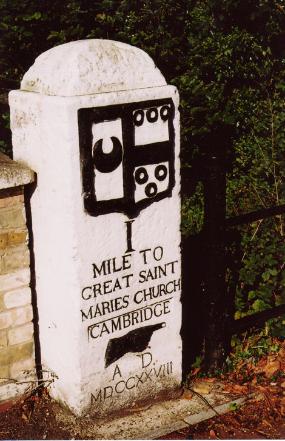
1702
The coach service from Cambridge to London took 15 hours..
Sources of information: The Victoria History of the Counties of England (1959). The History of the County of Cambridge & the Isle of Ely. Volume III. The City and University of Cambridge. City of Cambridge, page 1.
1708
Implementation of the William Austin bequest (1679): the parish appointed a school dame and it was possible to support 11 poor children.
Sources of information: The Victoria History of the Counties of England (1982). A History of Cambridgeshire and the Isle of Ely, Volume VIII. Armingford and Thriplow Hundreds. Trumpington, page 266.
Local History Group web page: Education and schools in Trumpington.
1715-35
Building of the current Trumpington Hall by Francis Pemberton on the site of the earlier manor house to the west of the village centre, overlooking the River Cam and Grantchester further to the west. The Early Georgian house was further extended in the early 19th century and through the 20th century.
Sources of information: The Victoria History of the Counties of England (1982). A History of Cambridgeshire and the Isle of Ely, Volume VIII. Armingford and Thriplow Hundreds. Trumpington, page 254. Pevsner, Nicholas (1970). Cambridgeshire. The Buildings of England.
Local History Group web page: Trumpington Hall and the Pemberton Family; the Manors of Trumpington; Evolution of Trumpington village.
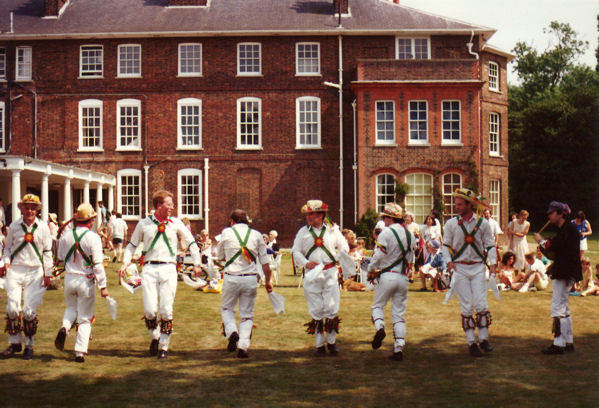
1724
Construction of the Chesterford (Stump Cross) to Cambridge, Turnpike Road and later erection of milestones along the route (still in situ on Trumpington Road and Shelford Road).
Sources of information: The Victoria History of the Counties of England (1948). The History of the County of Cambridge & the Isle of Ely. Volume II. Page 85. The Victoria History of the Counties of England (1982). A History of Cambridgeshire and the Isle of Ely, Volume VIII. Armingford and Thriplow Hundreds. Great Shelford, page 208.
Local History Group web page: Early History of Shelford Road.
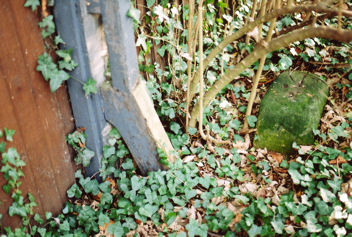
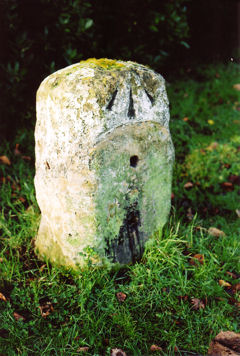
1724-25 and 1728
Construction of the Fowlmere to Trumpington Street, Cambridge, Turnpike Road, in 1724-25. The road is marked by the Trinity Hall Milestones from Great St Mary’s Church to London, dating from 1728. They were introduced by William Warren, Fellow of Trinity Hall, and are said to be the first milestones in Britain since the Roman period.
Sources of information: The Victoria History of the Counties of England (1948). The History of the County of Cambridge & the Isle of Ely. Volume II. Page 85.
Local History Group web page: Early History of Chaucer Road and Latham Road.

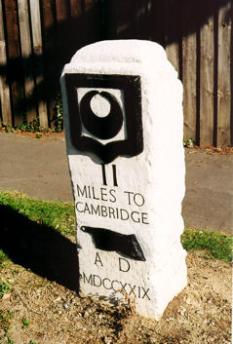
1748
The house now called ‘Anstey Hall’ passed into the Anstey family, when Dr Christopher Anstey and his wife Mary successfully contest the will of her nephew James Thompson.
Sources of information: The Victoria History of the Counties of England (1982). A History of Cambridgeshire and the Isle of Ely, Volume VIII. Armingford and Thriplow Hundreds. Trumpington, page 255. Pevsner, Nicholas (1970). Cambridgeshire. The Buildings of England.
Local History Group web pages: Evolution of Trumpington village.
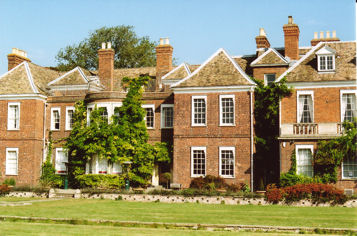
1760
There was a daily passenger service from Cambridge to London carrying four passenger, costing 12 shillings and taking 10 hours.
Sources of information: Rook, Arthur, Carlton, Margaret and Cannon, W. Graham (1991). The History of Addenbrooke’s Hospital Cambridge. Cambridge: CUP. Page 24.
1760s
Dr Anstey’s son and heir, Christopher Anstey (1724-1805), retired to Bath, poet and author of the ‘humorous’ New Bath Guide, 1766.
Sources of information: Merrett, Robert (2009). ‘Anstey, Christopher (1724-1805)’, Oxford Dictionary of National Biography. The Victoria History of the Counties of England (1982). A History of Cambridgeshire and the Isle of Ely, Volume VIII. Armingford and Thriplow Hundreds. Trumpington, page 255.
1766
The first patients were admitted to the new Addenbrooke’s Hospital in October 1766. It was built on what was then the southern edge of Cambridge, on the road to Trumpington. This was a period when the town was stagnating, with a static population, few new houses, unpaved streets, diseases including typhoid and a polluted river. Patients were drawn from Cambridge and the surrounding parishes.
John Addenbrooke (c. 1681-1719) left his estate of £4067 2s. 1¼d. “to hire, fit-up, purchase or erect a building fit for a small physicall hospital for poor people”. He had been a student at Catharine Hall (now St Catharine’s College) from 1697, then had a medical career, leaving Cambridge in 1711-12 to set up practice in London. Despite the nearly 40 year gap from his death to the hospital opening, Addenbrooke’s was one of the earliest general hospitals to be established outside London.
From 1772, the hospital was supplied with water from Hobson’s Conduit.
The Pemberton family was one of the leading supporters of the hospital from its opening to the present day.
Sources of information: Cambridge University Hospitals Web site [accessed 8 January 2011]. Rook, Arthur, Carlton, Margaret and Cannon, W. Graham (1991). The History of Addenbrooke’s Hospital Cambridge. Cambridge: CUP. Pages 12-19, 21-23, 27, 68. The Victoria History of the Counties of England (1959). The History of the County of Cambridge & the Isle of Ely. Volume III. The City and University of Cambridge, Public Health, page 106-08. Woodward, John (2008). ‘Addenbrooke, John (bap. 1681, d. 1719)’, Oxford Dictionary of National Biography. Oxford University Press.
1770s
Last known hanging on Gibbet Hill, to the east of Trumpington Road (the area where Leighton House was built in the late 19th century, now the Perse Preparatory School).
1783
James Cuming was appointed schoolmaster of the Dame School and continued in post until 1837, when his son, Charles, did the teaching. By 1791, James was also keeping a boarding school.
Sources of information: The Victoria History of the Counties of England (1982). A History of Cambridgeshire and the Isle of Ely, Volume VIII. Armingford and Thriplow Hundreds. Trumpington, page 266.
Local History Group web page: Education and schools in Trumpington.
1790
Act passed to enhance the turnpike from Chesterford (Stump Cross) to Cambridge, with a number of a number of provisions, including that there should be no buildings other than toll houses within 30 ft of the centre of the road.
Sources of information: Act for Road from Stump Cross to Trumpington, Stump Cross Turnpike Trust (Statutes 30 George III, c.94, 1790). Copy at Cambridgeshire Archives, P175/28/1.
Local History Group web page: Early History of Shelford Road.
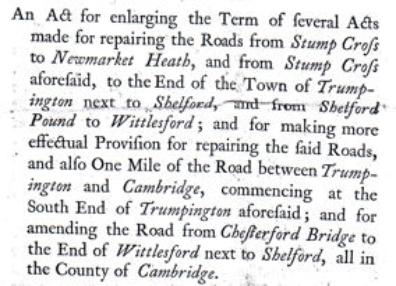
1790
Brasley Bridge constructed over the River Cam between Trumpington and Grantchester, replacing an earlier ford.
Sources of information: The Victoria History of the Counties of England (1982). A History of Cambridgeshire and the Isle of Ely, Volume VIII. Armingford and Thriplow Hundreds. Trumpington, page 249.
1796
Transport options from Cambridge to London now included a nightly Royal Mail coach, 16 shillings per passenger, taking only 7½ hours.
Sources of information: Rook, Arthur, Carlton, Margaret and Cannon, W. Graham (1991). The History of Addenbrooke’s Hospital Cambridge. Cambridge: CUP. Page 24.